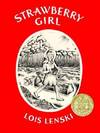
African Journal in Sports Illustrated Magazine
by Hemingway, Ernest
- Used
- Paperback
- first
- Condition
- VG
- Seller
-
Louisville, Kentucky, United States
Payment Methods Accepted
About This Item
Chicago: Time, Inc., 1971. Magazine. VG. Soft cover. 1st Edition. 4to. 1971 - 1972, three complete issues, December 20,1971, January 3 & 10, 1972, all in original wraps, mailing labels at all issues, all issues show very minor wear-only and are clean and bright. From the introduction, "When Ernest Hemingway died in 1961 several unpublished manuscripts of consequence were left in his estate. These included two novels, a few short stories and one extraordinary work of nonfiction, African Journal, excerpts of which begin on the following pages and will continue in two successive issues of SPORTS ILLUSTRATED. The manuscript is immense by Hemingway standards, 200,000 words, and represents some 16 months of his writing time between 1954 and 1956, though he was often interrupted, most notably in October 1954 when he won the Nobel Prize for Literature. He was obviously pleased with his African book as it progressed. At one point he said of it that he was writing 'maybe better than I ever have, truly going wonderfully.' The setting of African Journal (as we have chosen to call it; the manuscript itself was untitled) is a Kenya safari that Hemingway and his wife Mary took in the fall of 1953. It was a long-anticipated trip. Hemingway had not been to Africa for 20 years and much regretted this. Even now it had not been easy to get back. It was difficult, as he wrote in the journal, 'to break the chains of responsibility that are built up, seemingly as lightly as spider webs but that hold like steel cables.' The Hemingways spent their first two months in Kenya hunting in several areas while working on a story with a Look magazine photographer. Upon finishing that chore, as Hemingway considered it, he and Mary moved off on their own to the Kimana Swamp section of southern Kenya some 30 miles north of Mount Kilimanjaro. At this point the white hunter leading the safari, Philip Percival, had to leave them, and Hemingway himself was designated a quasi-official representative in the region for the Kenya Game Department, a position of responsibility in what were relatively perilous times because of the Mau Mau uprisings. The manuscript begins as Hemingway takes command on 'the last day of the month of the next to the last month of the year, and stops less than three weeks later. The literary form of African Journal is what Mary Hemingway aptly calls 'fictionalized fact.' The fictionalizing, she says, is minimal, but the master storyteller is at work, and it was never his intent to be anything short of that in this endeavor. One central character is Mary herself, and today on a wall of her New York City apartment is the skin of another major figure in the journal, a great blackmailed lion. The events described, says Mary, happened in substance as Ernest depicts them. He did not take a note while in Africa, but not long after they returned to their Cuban home, Finca Vigia, in the summer of 1954 he began to write, drawing upon his remarkable capacity for recalling scenes in minute detail. 'His memory was always astonishing,' says Mary. 'I had a record of the whole safari in my diary, but Ernest just carried it back to Cuba in his head. I have checked my diary to verify things, and he was consistently correct. He might embellish a scene, but he did that with everything in life. And who is to say what was truly the reality.'" In 1999, Patrick Hemingway, Ernest's 2nd son, an adventurer and author in his own right, would edit the original 200,000 word manuscript and publish it as, True At First Light..
Reviews
(Log in or Create an Account first!)
Details
- Seller
- Legacy Books II
(US)
- Seller's Inventory #
- 021723
- Title
- African Journal in Sports Illustrated Magazine
- Author
- Hemingway, Ernest
- Format/Binding
- Paperback
- Book Condition
- Used - VG
- Edition
- 1st Edition
- Publisher
- Time, Inc.
- Place of Publication
- Chicago
- Date Published
- 1971
- Size
- 4to
- Weight
- 0.00 lbs
- Keywords
- AMERICAN LITERATURE, MAGAZINES
- Bookseller catalogs
- Ernest Hemingway;
Terms of Sale
Legacy Books II
30 day return guarantee, with full refund including original shipping costs for up to 30 days after delivery if an item arrives misdescribed or damaged.
About the Seller
Legacy Books II
Biblio member since 2020
Louisville, Kentucky
About Legacy Books II
Integrity and Honor are the bottom line.
Glossary
Some terminology that may be used in this description includes:




